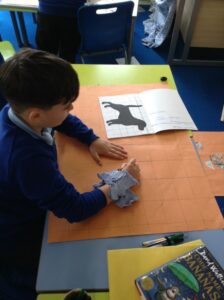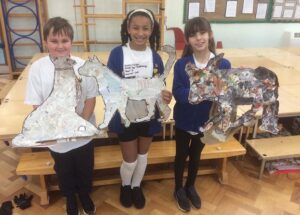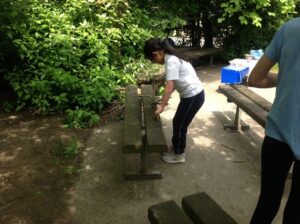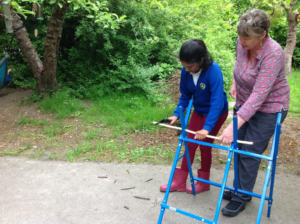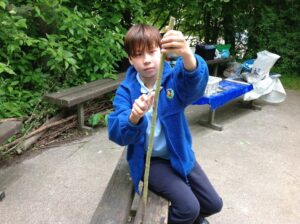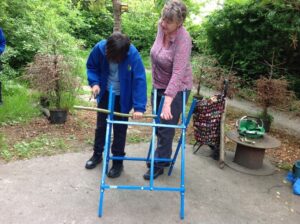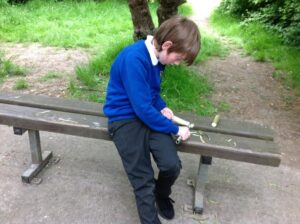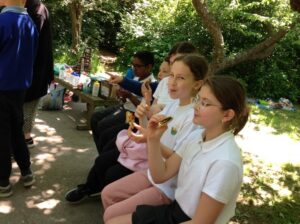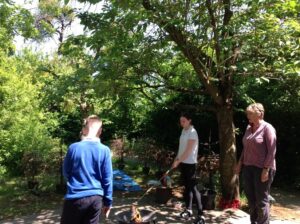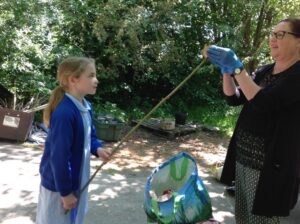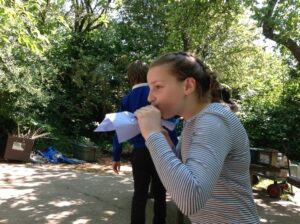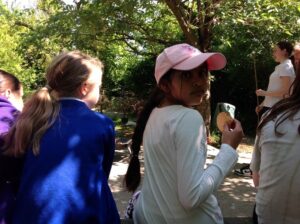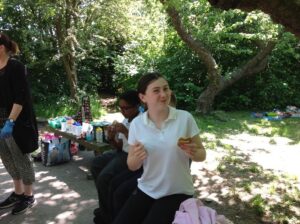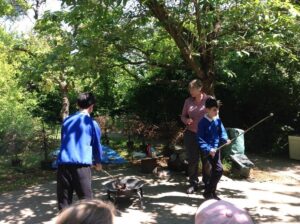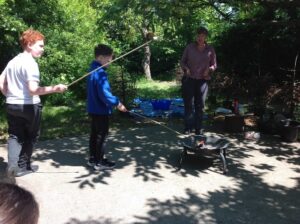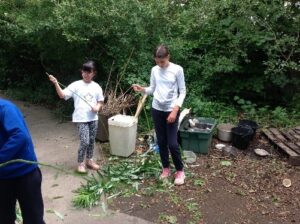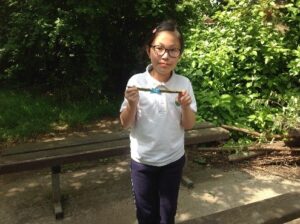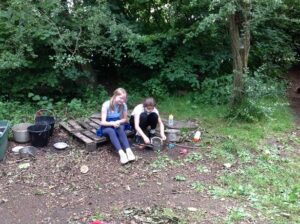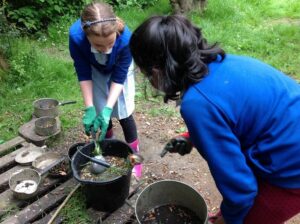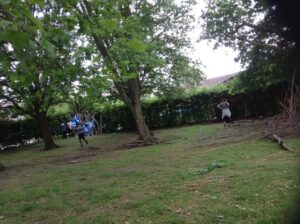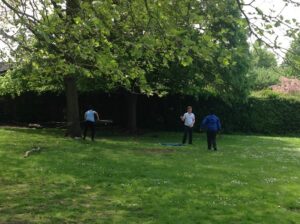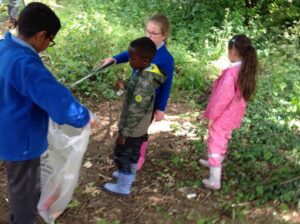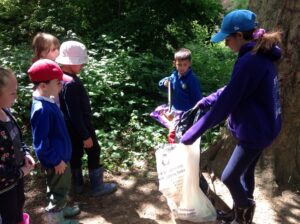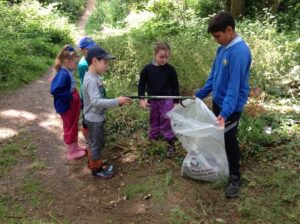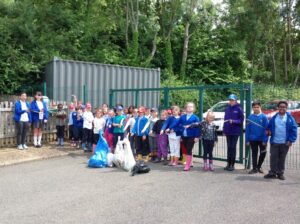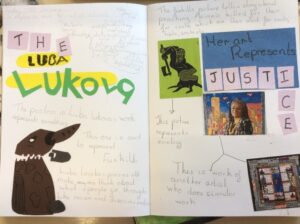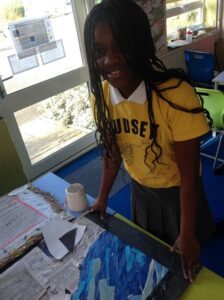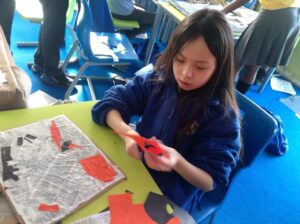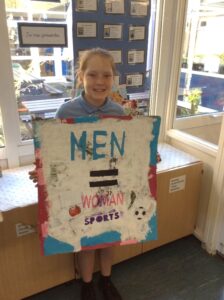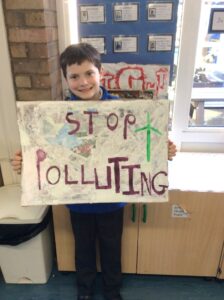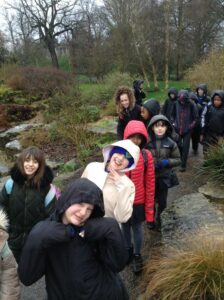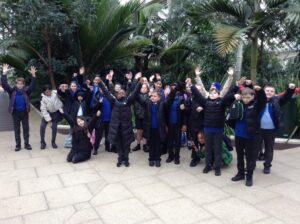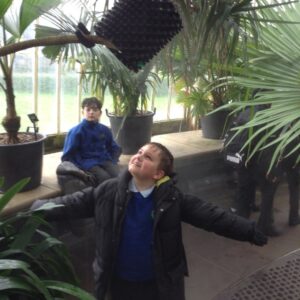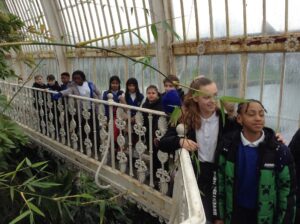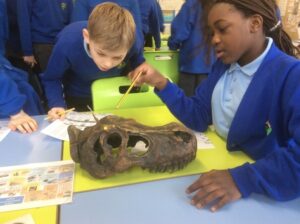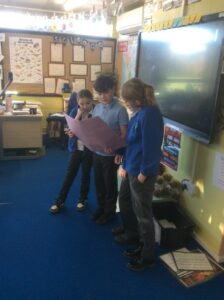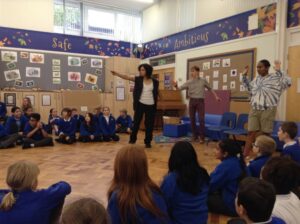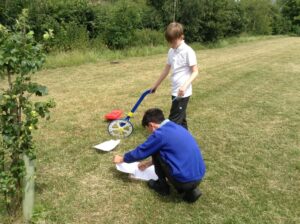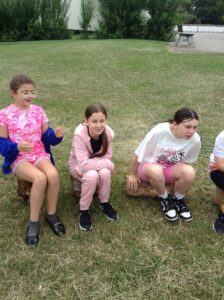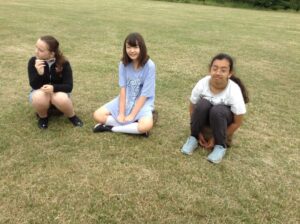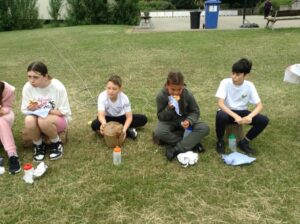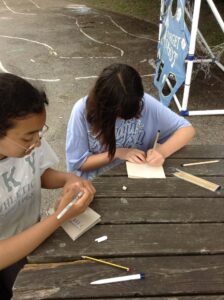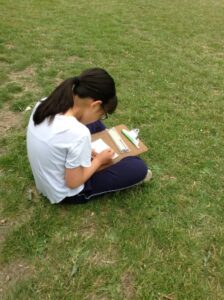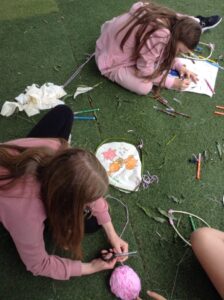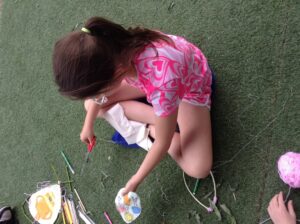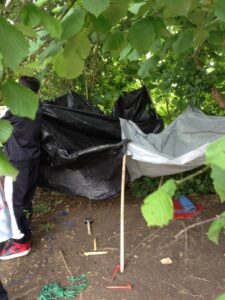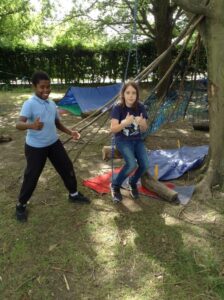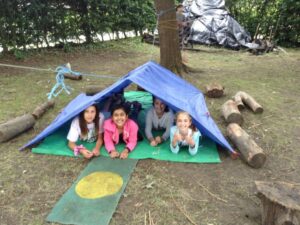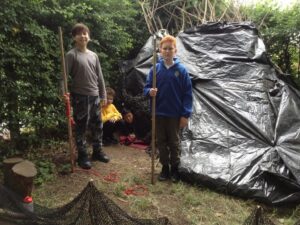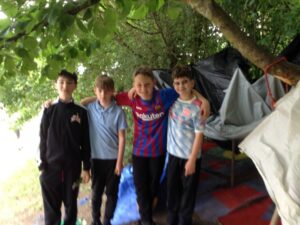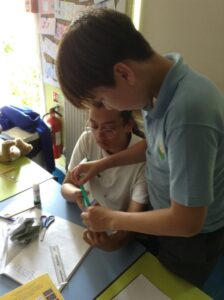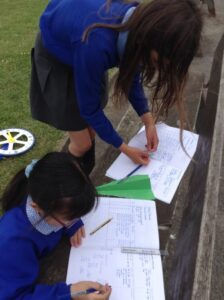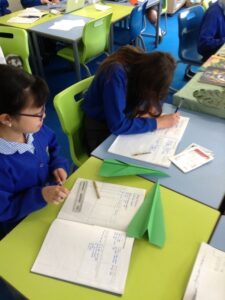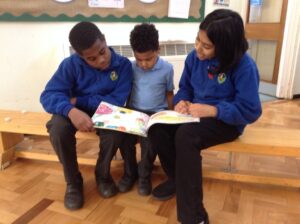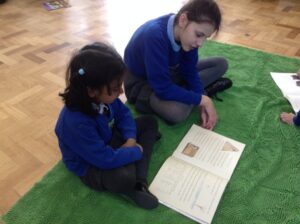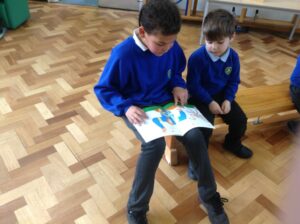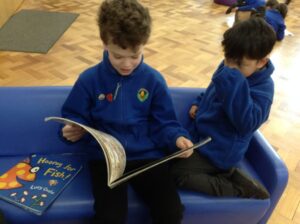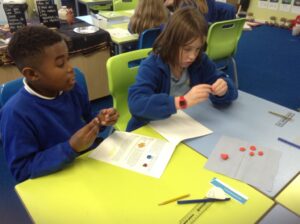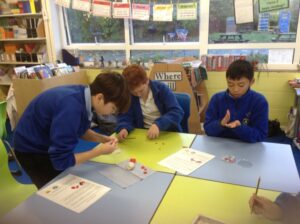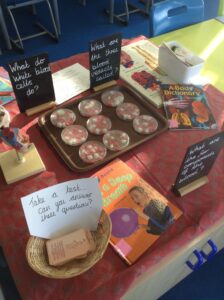Remote learning e-mail address – class6remotelearning@ryde.herts.sch.uk
- Curriculum Information Year 6 Spring 2024 (130.77KB)
- Curriculum Information Year 6 Autumn 2023 (136.69KB)
- Curriculum Information Year 6 Summer 2023 (132.41KB)
- Curriculum Information Year 6 Spring 2023 (131.07KB)
- Year 6 Objective Map - Maths Curriculum (55.51KB)
- Year 6 Maths Information for Parents (107.60KB)
- Year 5/6 Reading Information for Parents (517.24KB)
Learning Links
Autumn term 2023
Class 6 have really enjoyed their art project this term. The title of our project was flat yet sculptural. We looked at Lubauna Hind who creates sculptural large scales paintings.
We used negative pace and the grid method to enlarge drawings of animals. Class 6 loved working on a big scale and were really proud of their large drawings.
Our last step was to cut out and collage our final pieces. Some of us added black pen for shadow and detailing.
Summer term 2023 Forest School Sessions
During Forest School sessions pupils have had the opportunity to learn new tool skills, as well as revisiting those activities enjoyed in past years. The photos below show a selection of the range of activities during the term.
- Learning how to use new hand tools like Japanese saw and pruning saw, loppers, secateurs, bit and brace, hand drill and peeler skills on green willow.
- Our campfires are always an exciting and yummy time .
- Skills in sculpting with clay and creativity using willow.
- Play with mud and water has been popular too.
- Branches and tarpaulins used to create dens
- Problem solving team work to rescue soft animals stuck in the branches
Some of the pupils have supported Year 2 visits to ‘The Dell’ this term and assisted with the litter picks to keep the community space safe and tidy for everyone the animals who live there.
Jul 172024
Fairground Design and Technology
This term in Design and Technology, Class 6 have been working on creating a moving fairground ride. This has been a fun yet challenging project. Class 6 have used their knowledge of circuits which we revised last year and building structures to design and build their own ride. We were challenged to use a circuit, a dc motor, a pulley and a driver in our fairground ride. There were difficulties along the way, which included: ensuring our individual parts were cut to the right size (not easy when we were using thick cardboard); and creating the right distance between the motor and the driver.
Jun 112024
Visit to Knebworth Park
Class 6 went to Knebworth House on Tuesday 11th June. We were taken on a tour of the house and found out so much about how the Tudors lived, including: what they wore; where they slept; what they ate and much more.
We also found out how the family welcomed Queen Elizabeth I – the last Tudor monarch – when she came on a royal visit to the house.
Did you know that the first owner of Knebworth House helped Henry Tudor win the War of the Roses.
Mar 282024
Protest Art
This term, in art, Year 6 have been exploring the work of protest artists like: Luba Lukova, Kate de Ciccio and Faith Ringgold. We used their work to inspired our own mixed media piece which focused on something that was important to us. Some of the class chose issues about animal cruelty, fast food prices, stopping racism and stopping pollution.
Mar 122024
Kew Gardens
Linked to our work in geography (world biomes and climates) and Science (evolution and adaption) Year 6 took a trip to Kew Gardens in London. Although it was a wet day, the children learnt so much about what it is like to be in different climates – most agreed that a tropical rainforest was too hot and damp for them. We saw so many amazing plant species which sometimes looked very strange. We all took photos of the plants that most interested us which will form part of a research activity back in class.
Feb 062024
Evolution with Dr Helen Waterhouse
We started off by doing an activity where we had to identify different fossils and write them down on a sheet. It was really cool that there were some real fossils that were hundreds of million years old and we were allowed to touch them.
After this, we had our second activity and it was about DNA. Dr Helen showed us the structure of DNA. Then she showed us some strings with plastic balls on it to represent a DNA code. We had to find out what living thing the DNA represented. Lots of them were animals.
Finally, we figured out which animals used to be related. We had to compare the structure of each DNA without looking at what the actual animal was. We were really surprised to see some animals that used to be related but now are completely different – this is evidence of evolution.
Nov 082023
Romeo and Juliet
To inspire our writing, Class 6 watched an amazing performance of Romeo and Juliet by the Young Shakespeare Company. The actors and actresses helped us understand the plot and some of the Shakespearean language. In our English lessons we have worked on developing the writing skills needed to write our own version of the tragic tale. We have looked at punctuating speech, using paragraphs, writing expanded noun phrases and developing our vocabulary.
Jun 302023
Outdoor Adventurous Week
We loved outdoor and adventurous week – our last ever one at this school!
We made clinometers out of protractors, straws and string. We used these to help us measure the height of different trees and taller objects around the school grounds. We had to make sure the string on the clinometer was at a 45˚ angle when looking through the straw. This meant that between us, the bottom of the tree and the top of the tree we had made an isosceles triangle.
Campfire
We enjoyed our tasty breakfast bagels which we toasted on the campfire.
The Ryde Journey
For one of our activities for OAA week we looked at the work of Richard Long. He inspired us to create small sketch books inspired by places around The Ryde. We chose the media we wanted to work with and some us wrote small poetic sentences to go with our drawings and sketches.
Dream Catchers
We created dream catchers from bamboo. We had to bend and shape the willow and cut string and holes into the calico before threading and decorating the material.
Den Building
Jun 282023
OAA Science
During OAA week we completed an investigation into paper aeroplanes. We thought about different questions we could investigate relating to paper planes, for example: Do larger planes fly further? Do heavier planes fly shorter distances? How does the size of the wings impact the distance the plane will fly? Each group designed their own investigation thinking carefully about the variables and how they would measure and collect their results.
We have been looking at light as one of our science topics over the last year. In one of our science lessons this term we made periscopes. We investigated how we could use mirrors to change the direction of light beams and to reflect an image you wouldn’t usually be able to see.
Feb 032023
Reading to their reading buddies
Class 6 had a lovely end to the week reading to their buddies. They enjoyed reading the books with lots of expression and trying to keep the receptions engaged in the story.
Jan 232023
Components of the blood activity
Year 6 have been learning about the human circulatory system. Today, they used plasticine to create a model of blood sample in a petri dish. They used white plasticine to create the two different types of white blood cells, red plasticine for the erythrocytes (red blood cells), coloured water for the blood plasma and small dots for the platelets. The children researched each cell and what they did as they made their sample.

